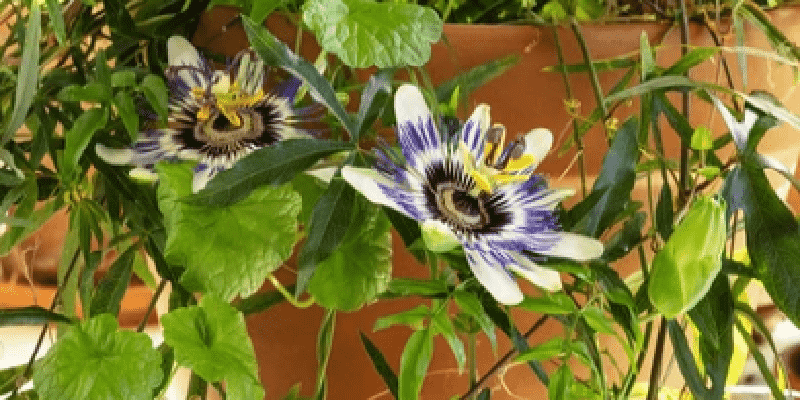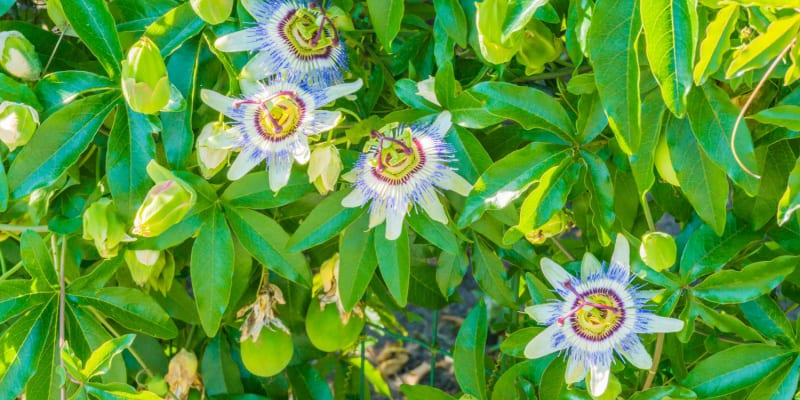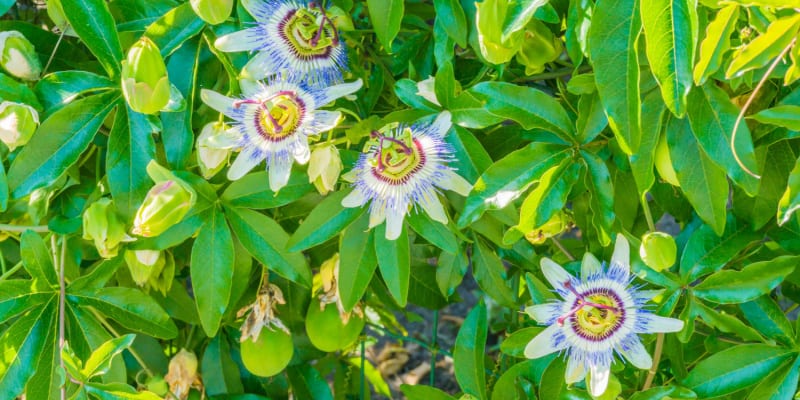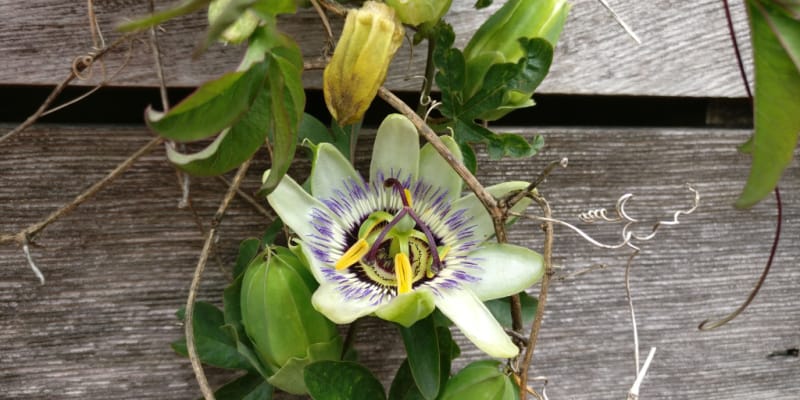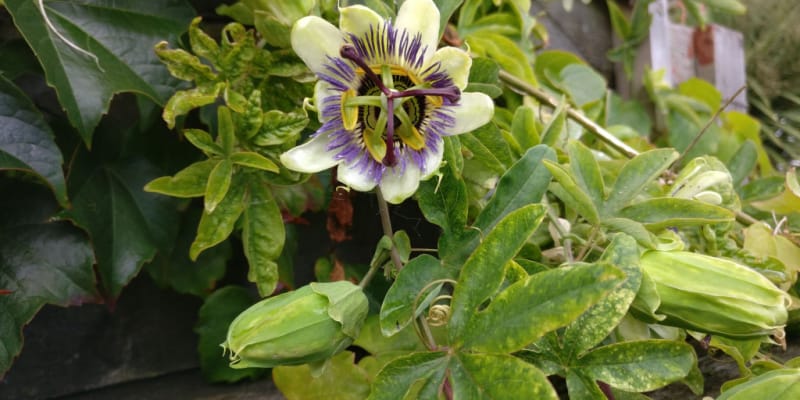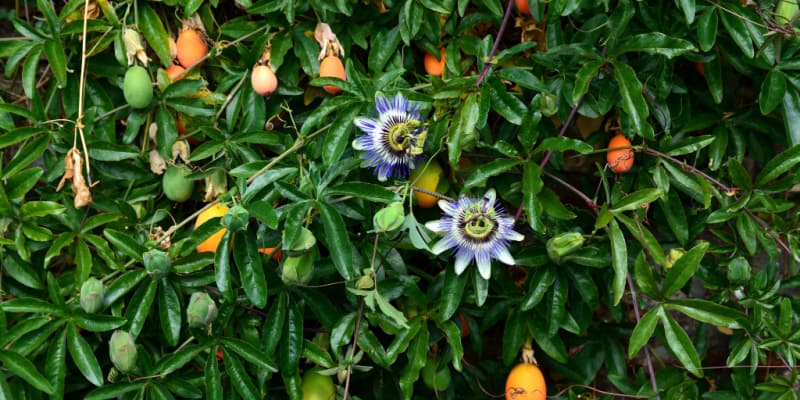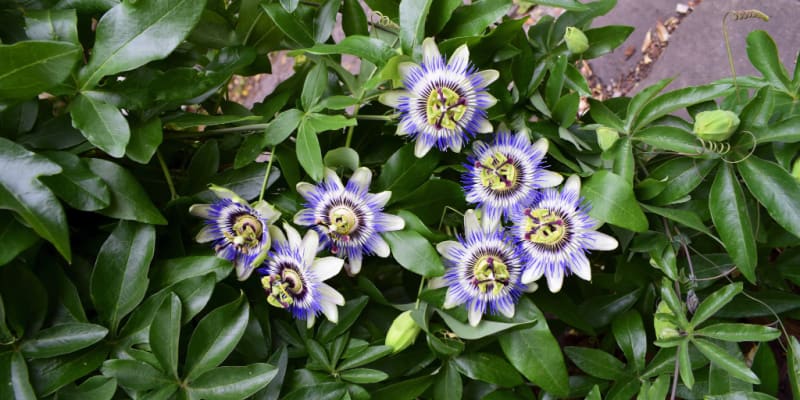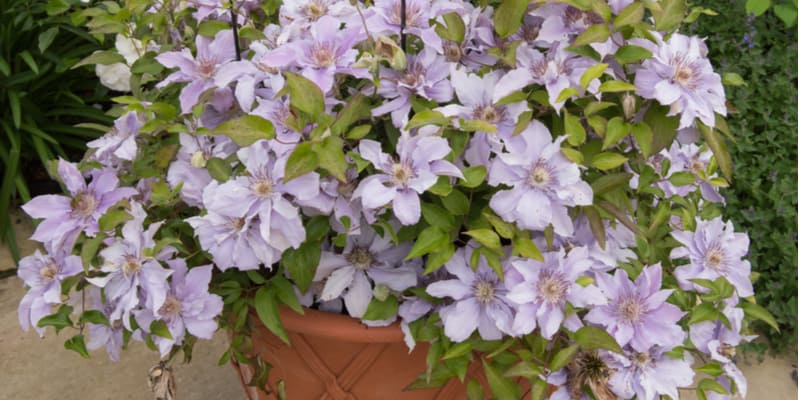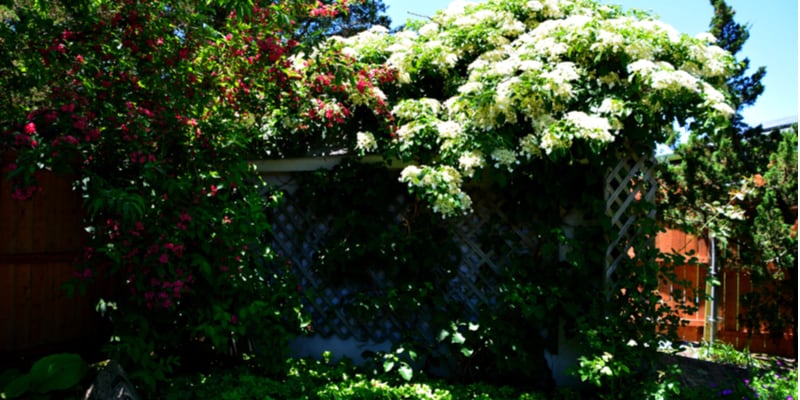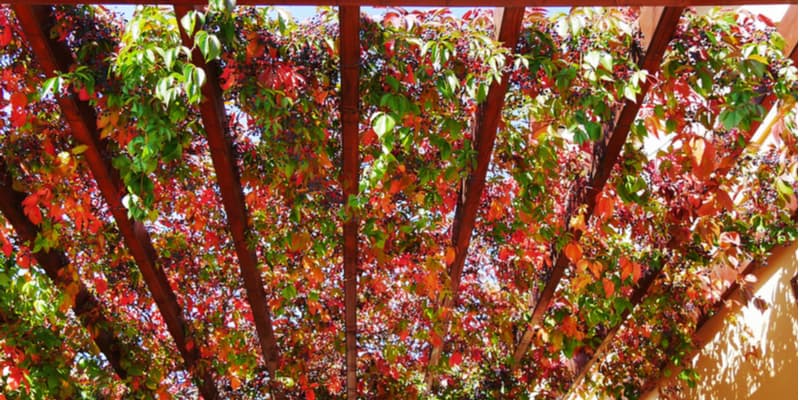Growing passion flowers in pots and containers
Passion flowers grow quite happily in pots and other containers and it’s a great alternative for those who can’t plant them in the ground or those who want to grow some of the more tender varieties in greenhouses and conservatories. Another advantage is planting them in this limited space stops them from getting out of hand and lets you fully control the environment they grow in, as they are notoriously vigorous. Plus, you can bring them indoors in the winter…
